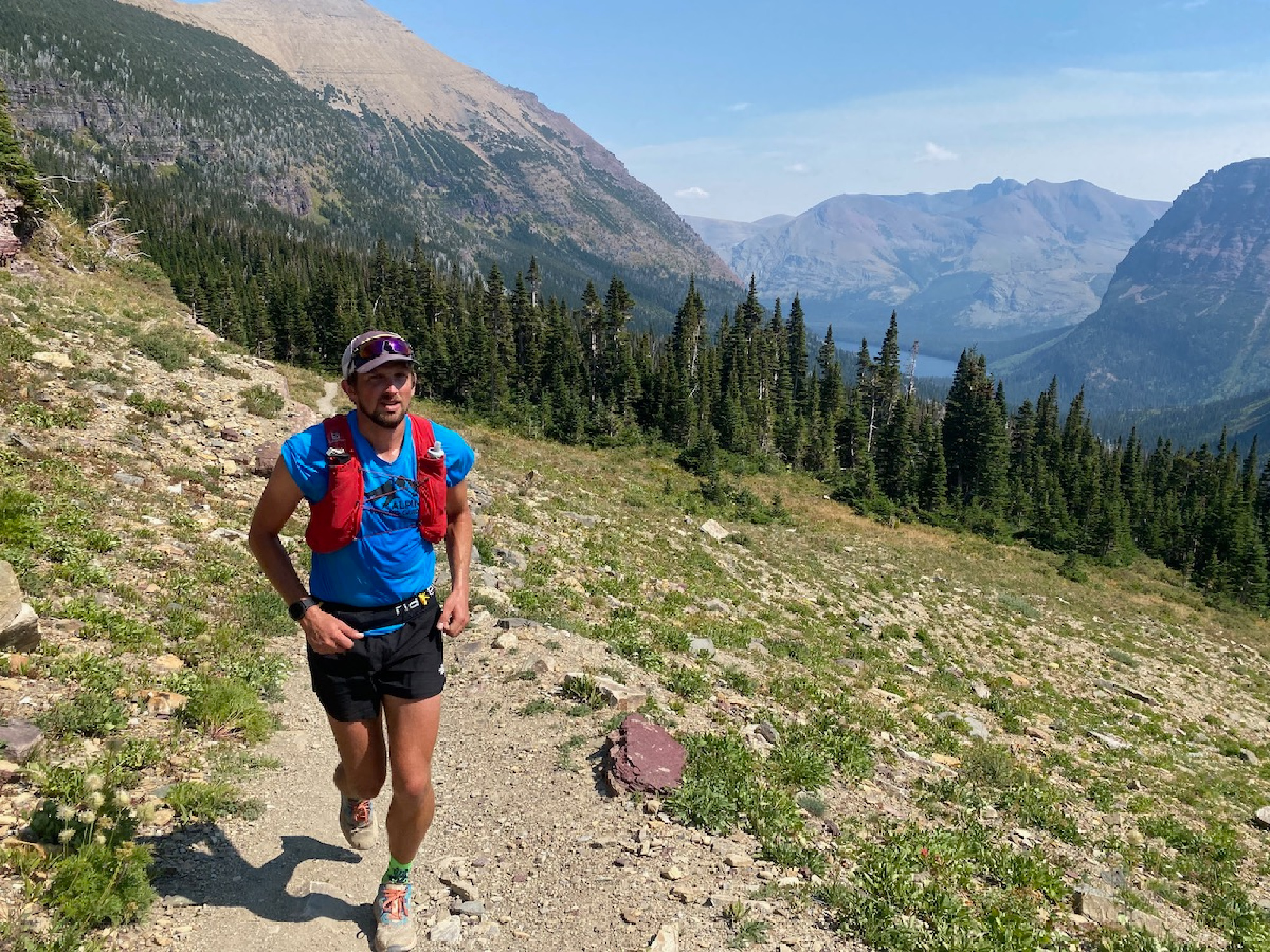If you’ve ever forced yourself out for a jog on busy pavement or suburban sidewalks and loathed every hard, unforgiving stride, then you might be more suited to trail running. Trail running has gained attention as a trendy outdoors activity, complete with its own influencers, gear brands, and lingo. But at its core, it’s exactly what it sounds like: running on trails rather than roads.
I was not a runner until I became a trail runner. The very idea of running made me want to vomit in my mouth—until one day I decided to trade a weekend hike for a trail run instead. I quickly discovered that running uphill is very difficult if you’ve never done it before. But the minute I turned around on the ridgeline and started running back downhill again, prancing over rocks and tree roots, I was hooked. It was a kind of high I had never felt before. Running a few dull miles around my neighborhood was not nearly as fun.
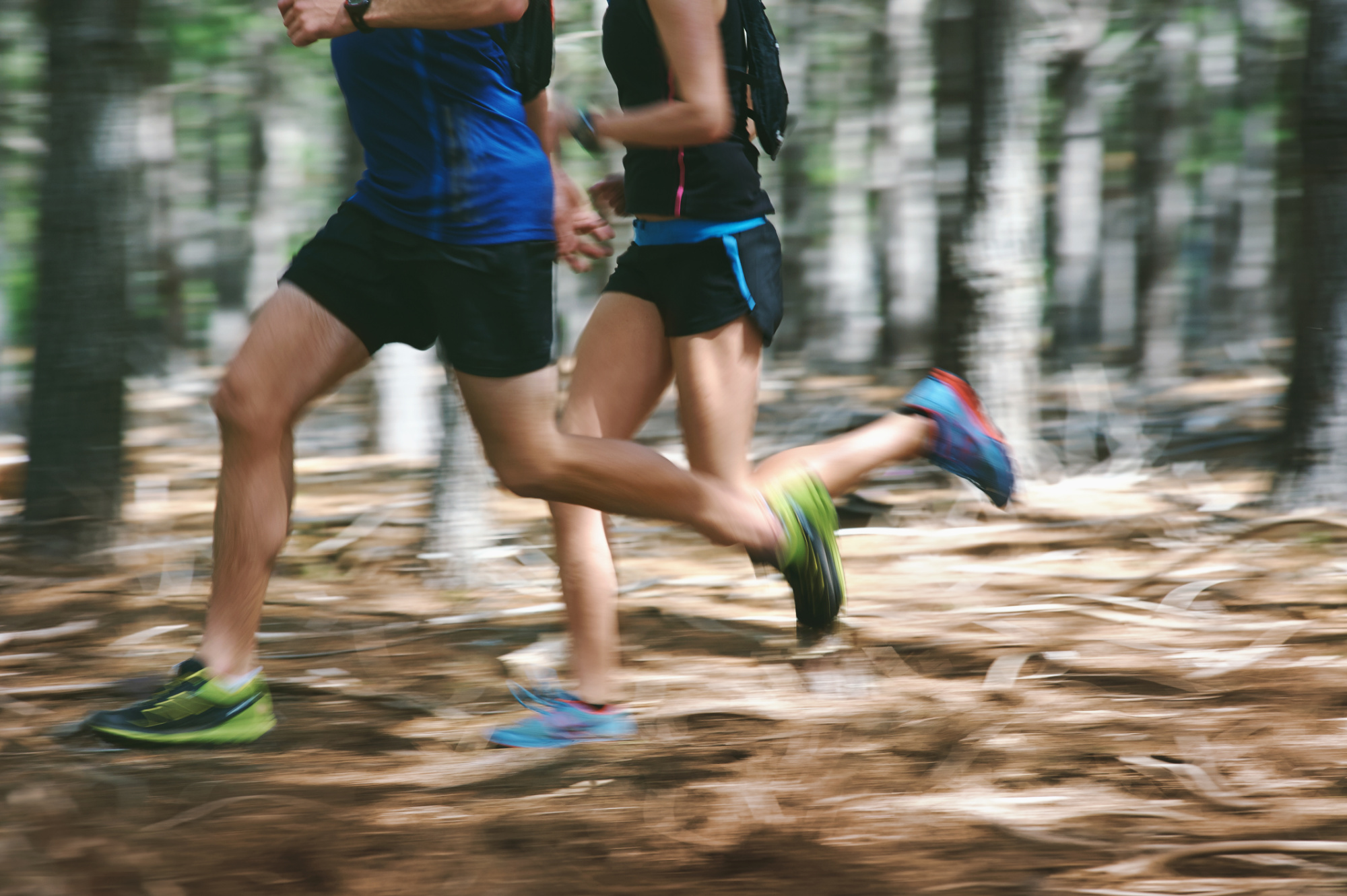
This spring, I completed an 18.6-mile race with over 3,000 feet of elevation gain. When the bug bites, it bites hard. One of the best parts of trail running is how well it prepares you for your other Type-II hobbies. Trail running and hunting, for example, are linked in a way that only those who do both understand. When you’re racing to intercept an elk or hauling ass uphill toward a gobble, the trail runner in your brain takes over. Your breathing, mechanics, and mindset all shift, and suddenly you’re eating that climb like it was served for breakfast.
You don’t have to like running to enjoy trail running or, barring that, to benefit from it. Here’s everything you need to know to begin trail running:
- How to Start Trail Running
- Trail Running Technique
- What to Wear Trail Running
- Tips for Injury Prevention, Nutrition, and Hydration
- Trail Safety and Etiquette
- The Benefits of Trail Running
- FAQs
How to Start Trail Running
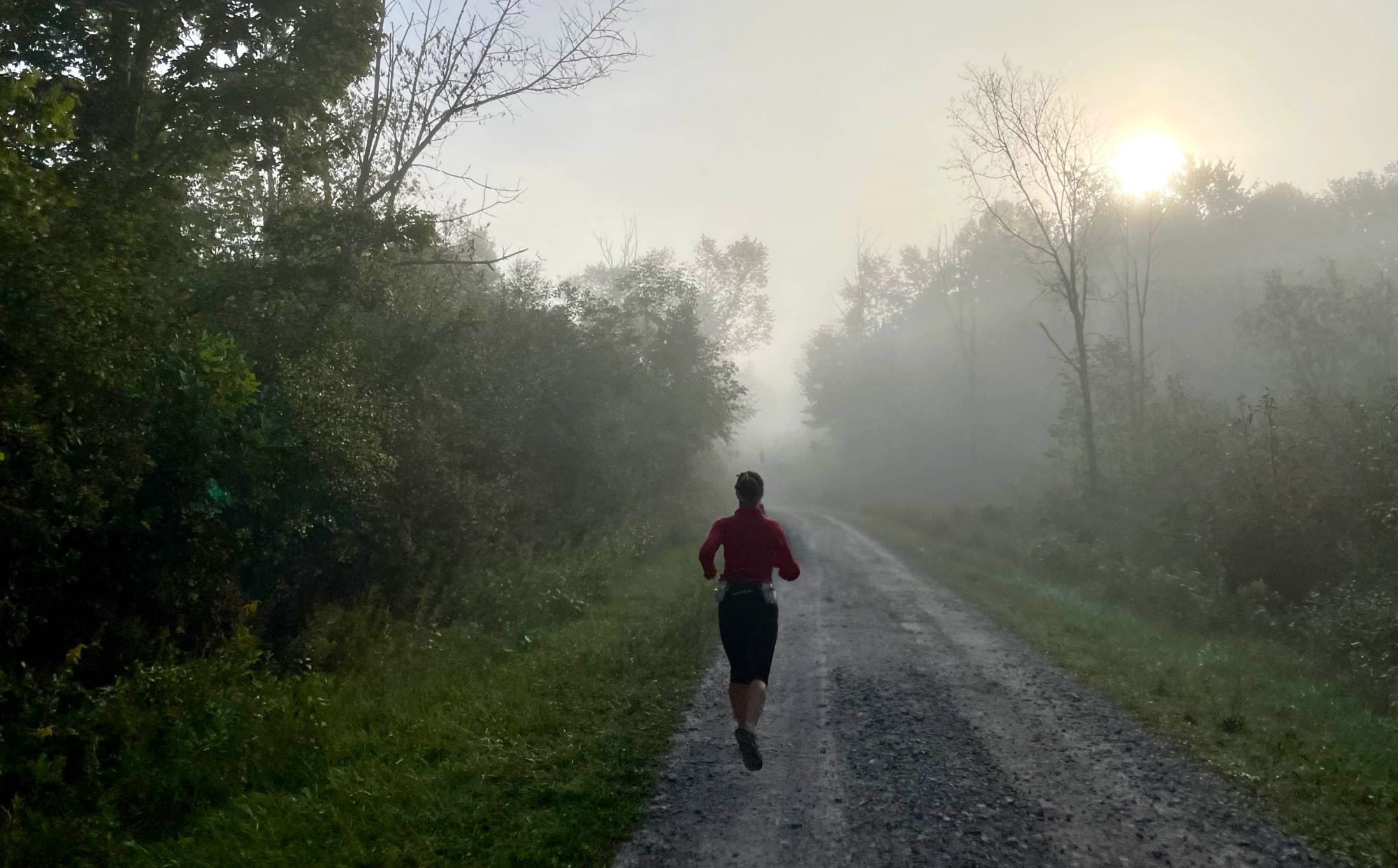
As with most new hobbies, the worst thing to do as a beginner trail runner is walk into your nearest sporting goods store and fall down the rabbit hole of trail running gear. You can convince yourself to spend hundreds on the latest shoes, hydration packs, vests, apparel, gaiters, the best GPS watches—the list goes on. But that’s overkill.
All you really need is a pair of athletic shoes, which you probably already own. These can be road running shoes or even just your gym shoes (just don’t use those super-flat, rigid crossfit shoes). Lace them up and find a low-elevation park, a dirt or gravel road, or similar for your first time out. Once you’re hooked you can look at upgrading to shoes with better traction for trails that have sketchier terrain. Some tips to keep in mind:
- Run slowly. Keep a comfortable pace
- If there’s a significant incline, don’t be afraid to hike instead
- Enjoy running the flat and downhill stretches
- Engage your arms. Hold them a little further from your body for balance than you might on a normal run and pump them to help with your momentum
- Keep a short stride and try to land, or strike, the ground with the ball of your foot rather than your heel

Trail Running Technique
Trail running, like all other athletic activities, requires a unique mindset and extra attention to form and body mechanics. Sara Boughner, a physical therapist and expert trail runner who recently won the women’s division in the Wasatch Front 100 Mile Endurance Run, advises embracing trail running for its variable nature.
“If you’re interested in becoming a trail runner, it’s helpful to think about letting go of certain expectations you might have if you’re used to running on the road,” Boughner tells Outdoor Life. “It’s more of an experiential type of running. You’re interacting with the landscape and adjusting what you’re doing with your body based on the trail that’s ahead of you, as opposed to locking into a pace and hitting it mile after mile.”
Trail Running Pace
The biggest mistake beginner trail runners make (especially if you’re used to road running) is running way too fast and fading out in the first 10 minutes. There’s no denying it; you will run trails slower than you run roads. This is partially because your steps are not all the same. Some will involve rocks, tree roots, or puddles. Some will feel uneven. As a result, each step requires focus and attention.
“You have to throw the idea of pace out the door and start to base success more on your effort level,” Boughner says. “Everyone I know who ran [roads] before they started trail running has gone through a learning curve or a process of understanding that, yeah, an 18-minute mile up that hill might be the fastest anyone’s gotten up that hill. You have to completely adjust your expectations and your engagement with running.”
If you usually run a 9- to 10-minute mile, expect to run 11-minute miles or slower when first starting out. Your uphill pace might be closer to 15 or 20 minutes. Hiking might even be more efficient than running on certain steep stretches, Boughner points out. But any time spent on worrying about your pace is time wasted. The point of trail running, especially as a beginner, is not to do it quickly.
Where to Look
When you walk on a trail, you don’t stare at your phone or stare straight ahead the way you do on a sidewalk. You have to watch the ground in front of you—at least a little bit—to make sure you don’t trip. Trail running goes the same way, except you’re making those subconscious decisions about where to plant your feet even faster. For that reason, it is slightly more mentally taxing than road running.
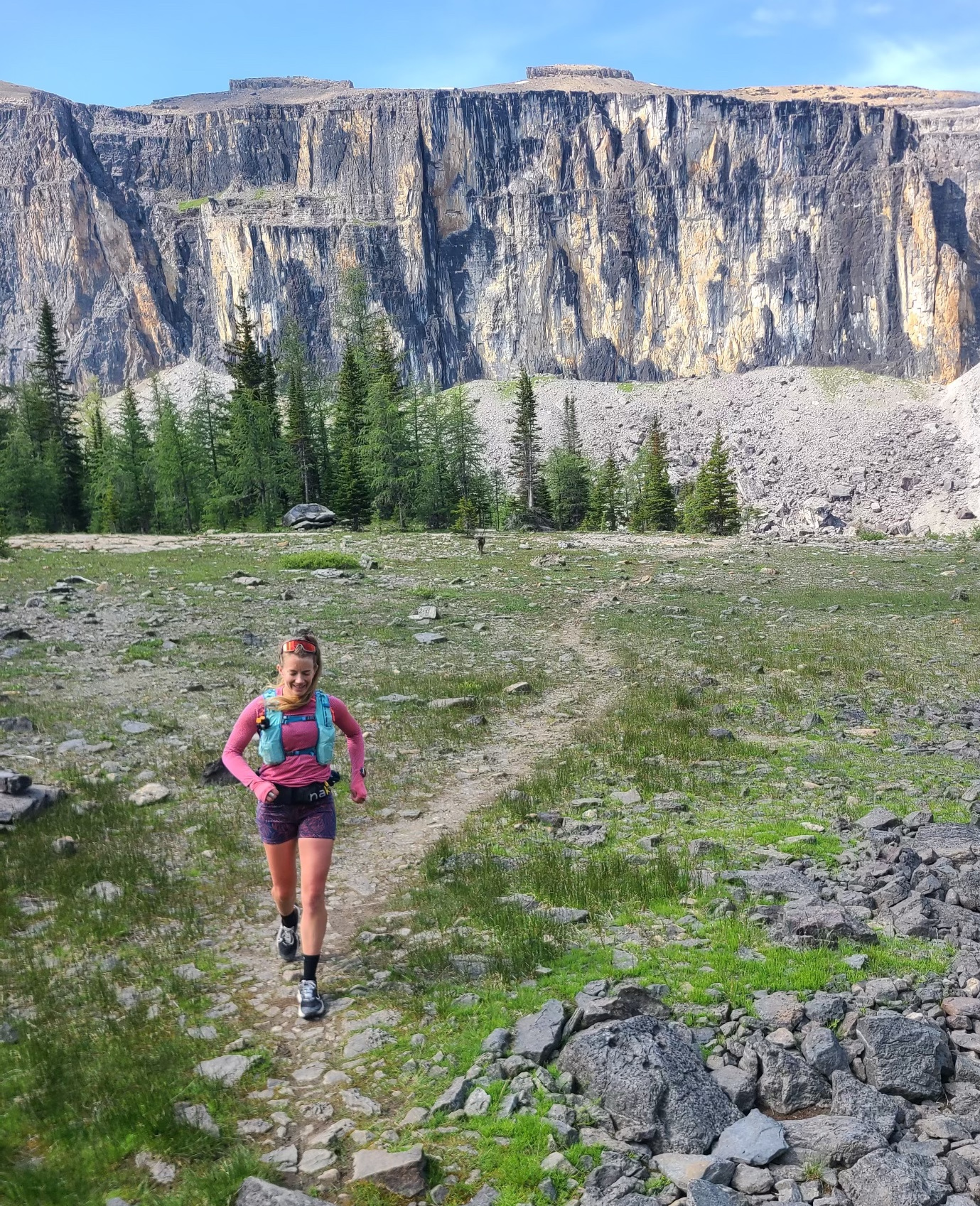
While you might feel the need to stare at your feet, push yourself to look just slightly ahead instead. The rule of thumb is generally to look about 10 to 15 feet in front of you, whether you’re going uphill, downhill, or are running a flat section.
“Looking in front of you is pretty helpful for planning your route and not just getting locked in to whatever’s right under your feet,” Boughner says. “If you can plan your line [of steps] before you get there, that will help you roll through the terrain more quickly.”
It’s also important to check your surroundings frequently. Don’t zone in on the trail so much that you’re completely unaware of what’s happening in front of you.
“We all like to get into the zone, looking at the ground, and we won’t see that there’s a biker right up ahead,” Boughner says. “Look up and look around every once in a while.”
If you start to feel overwhelmed, or if the trail gets particularly rocky or dangerous, just hike instead. As you get better at trail running, you’ll learn to take in the view. Half the fun is getting to run somewhere beautiful and wild. You don’t want to miss that by staring at your shoes the whole time.
Running Uphill and Downhill
When you start to mix elevation into your trail runs, keep some specific techniques in mind to get the most out of every step. For running uphill, you should:
- Avoid letting your heels touch the ground
- Lean forward just slightly at the ankles, without bending at the waist
- Keep your chin up to open your airway
- Keep your eyes on the ground ahead of you
- Drive your knees upward as if climbing stairs
But beyond keeping good form, also try to plan ahead for long climbs.
“It’s important to be able to read the trail and the terrain. If you know you have one 100-foot hill in your run and the rest is just flat, versus having a 3-mile climb and you’re going to go up 2,000 feet, that’s going to adjust your pace,” Boughner says. “Knowing what to expect so you can alter your effort level is important. Does this need to be a sustainable pace for a long climb or can it be a relatively less sustainable pace that’s going to be over faster and that I can recover from it faster?”
When running downhill, your form will be slightly different. Make sure to:
- Avoid leaning back, as it causes unnecessary strain on your quads
- Stay at least perpendicular to the ground underneath you, if not leaning slightly forward
- Take short, light steps and pick your feet up to avoid tripping
- Engage your arms for balance
“Keep your upper body pretty relaxed and let your arms go wide for balance,” Boughner says. “This will help with your overall reaction to different balance challenges on downhills. On more technical terrain, like a super rocky trail or a scree field, you’re going to need to take shorter, quicker steps to navigate the technicality of that terrain.”
What to Wear Trail Running
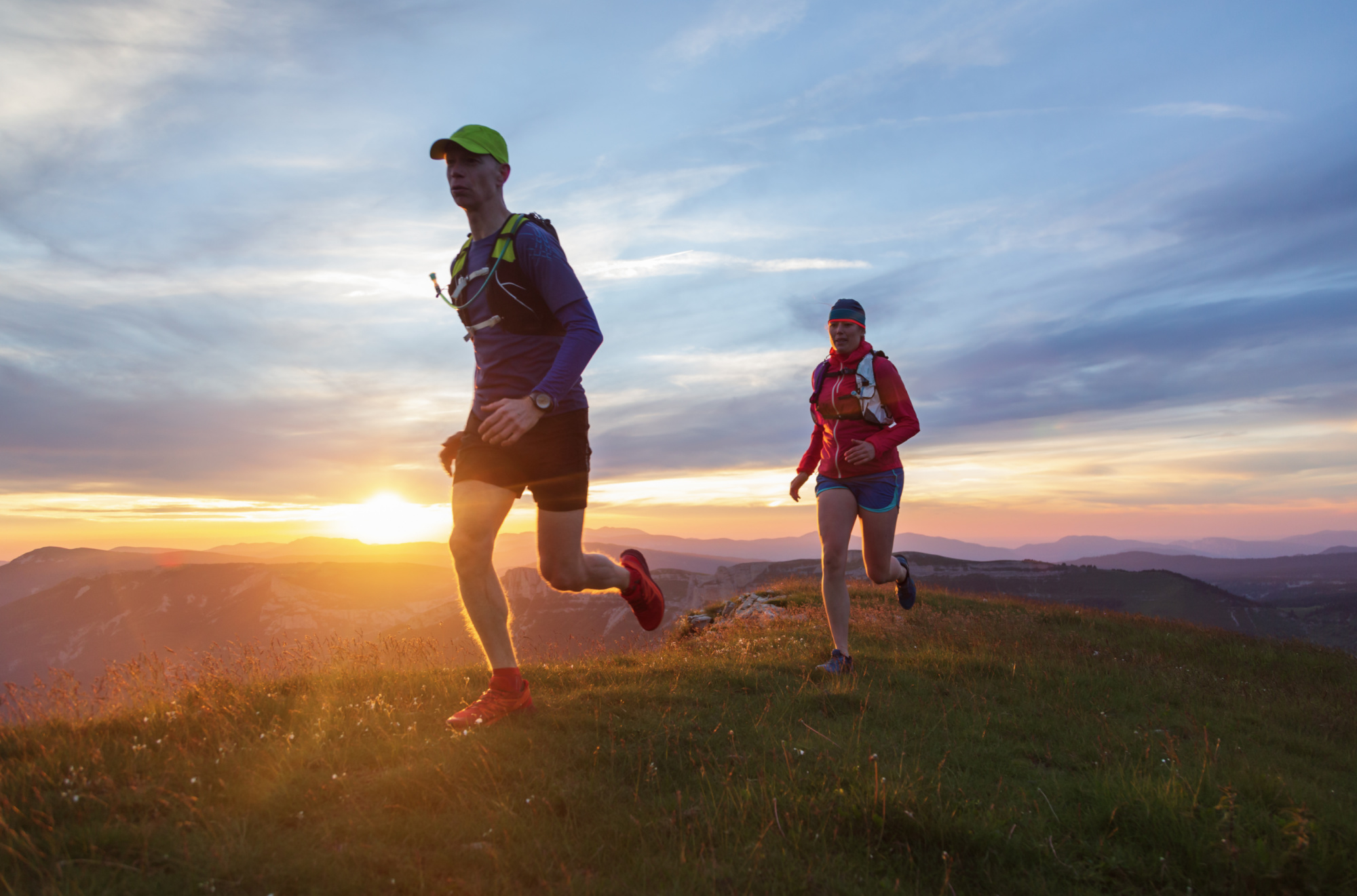
If you feel like trail running is for you after a few initial runs, then it might be time to invest in a few pieces of proper gear.
The right trail running apparel, first and foremost, depends on the weather. Odds are you already know how to dress for outdoor activity: Warm base layers for cold days, moisture-wicking materials for the heat, all the usual outdoor dress rules apply (never wear cotton). More pockets are usually good, especially ones that zip and can hold car keys, a phone, identification, and snacks.
Good socks are also important. Lots of runners prefer modern merino wool socks designed specifically for running or hiking. The wool breathes and lets moisture escape easily while the material is generally softer and more supportive than cotton. The cushioning provided by running socks is extra important on the trail, where you’re more likely to bang up your toes on roots or rocks. You’ll also want reliable trail running shoes (more on those in a minute).
Beyond apparel, investing in a running vest or hip belt is a good idea. (I prefer Nathan vests, but Osprey and Camelbak are other good options.) This is especially true in grizzly country. If there’s any chance you might stumble across a grizzly or maybe a mountain lion, bear spray is essential; a running vest or hip belt is really the only good way to carry it. Trail runners are more prone to surprise wildlife encounters than hikers because they don’t make much noise and they move through the woods faster. For most trail runners, bear spray is overkill in black bear country.
What to Carry Trail Running
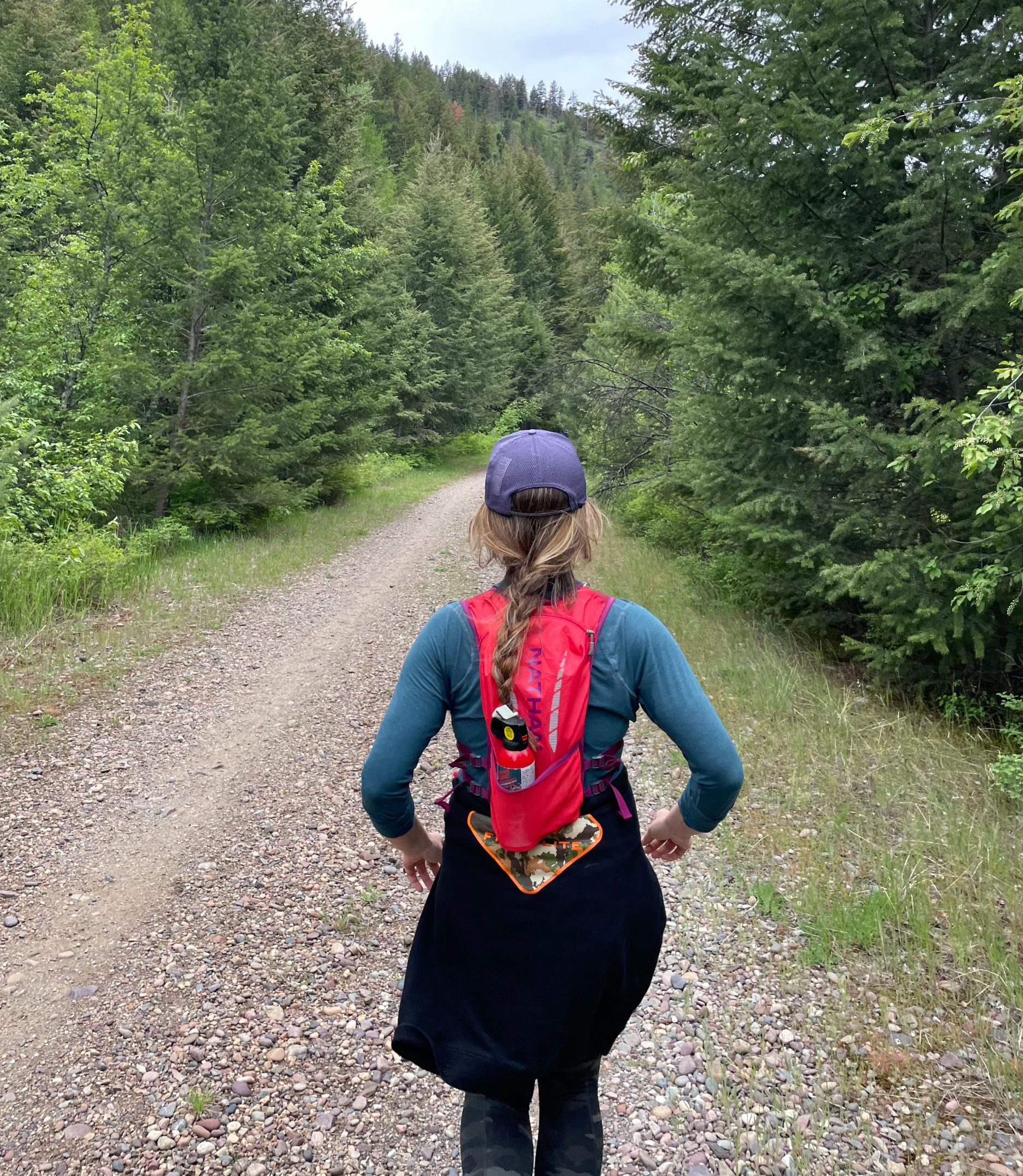
When you go on a trail run, consider carrying:
- Water
- Snacks—energy gels or chews, small granola bars, or just a good ol’ fashioned PB&J
- Electrolyte mix—some are caffeinated, others are sugar-free, and some are flavorless
- Your phone and/or a GPS device or GPS watch
- An extra layer or a waterproof layer
- A breathable hat and sport sunglasses
- Satellite messenger
If you’re going to be gone for an hour or longer (or running in hot or humid conditions) water is especially important. Some of the best hydration bladders are relatively affordable. You might already have one that you hike or hunt with. Most 1.5-liter bladders will fit in most running vests, so you don’t need to buy the two together, although they are usually sold together. If you already have a bladder and find a used running vest for sale, ensure the two are compatible before making any purchases.
The point is to have enough water, food, and clothing to get yourself through the run safely and at least somewhat comfortably, without packing so much that you feel extra weighed down. Save the longer excursions and the technical terrain for a different day. In the meantime, keep building cardiovascular strength and knowledge of what’s reasonable to shove into your running vest.
How to Pick the Right Trail Running Shoes
You’ll also need a good pair of shoes. Trail running shoes, just like hiking boots and road running shoes, come in a variety of sizes and styles. If you’re already a seasoned road runner and have preferences for road shoes (lots of stability, a low heel-to-toe drop, a wide toe box) apply that same logic to your trail running shoes.
Read Next: Altra vs Hoka
If you’re new to running and have no clue what kind of shoes to buy, it’s wise to go to a local specialty running store for a fitting. An expert can help you decide which shoe will best fit your foot, running style, mileage, and the terrain you plan to tackle.
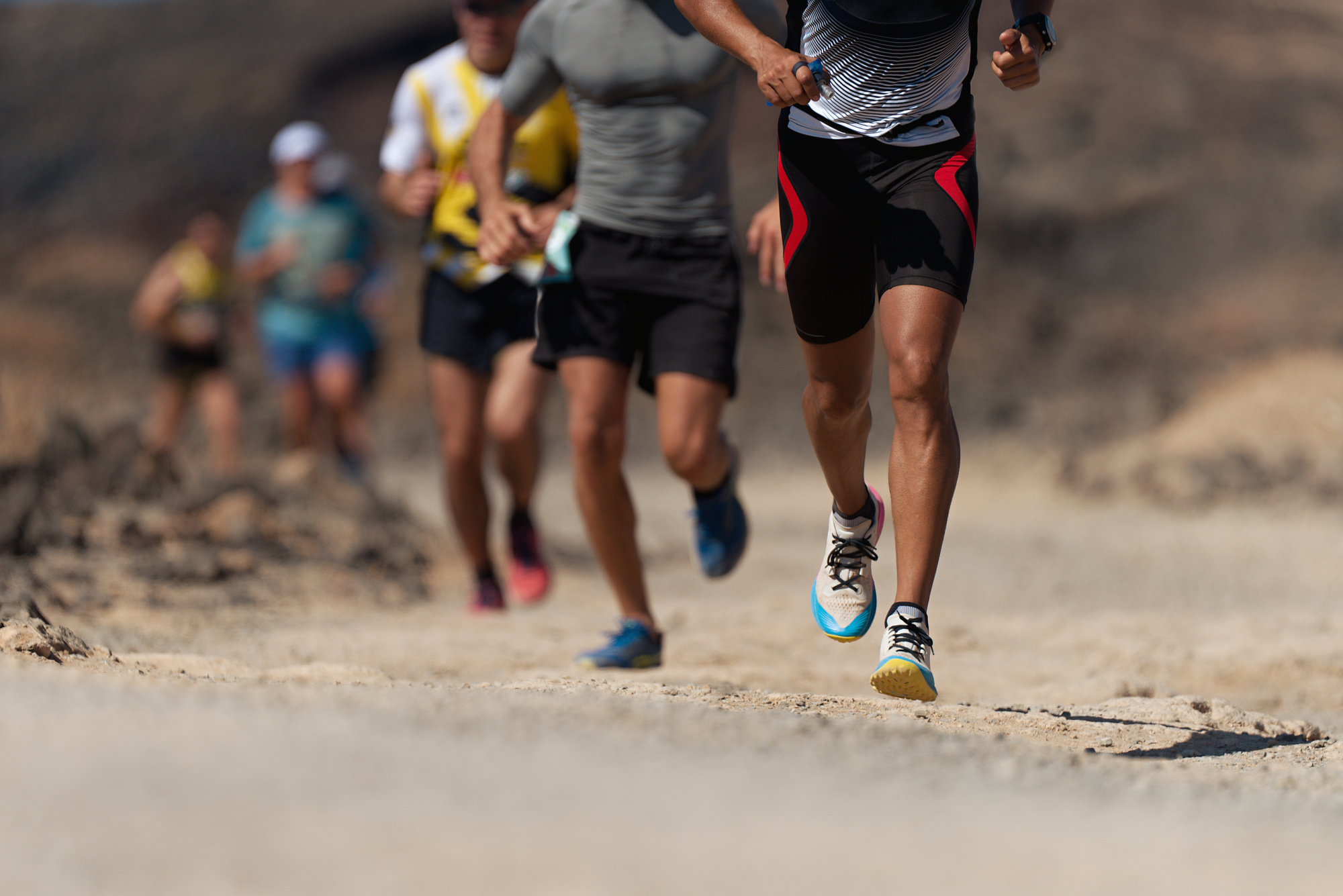
What Are Zero-Drop Shoes?
As you try a few different shoes, you might discover a preference for shoes with less cushion that allow you to feel more of the ground underfoot. If that’s the case, it might be worth trying a pair of zero-drop trail running shoes, like the Altra Lone Peaks (which also come in men’s and women’s sizes). The term “zero-drop” means your toe and your heel are equal distances from the ground, just like they are when you’re barefoot. Most zero-drop shoes have very minimal cushion, too. As a result, these shoes force your feet, ankles, Achilles’ tendons, and calves to work harder. Those muscles are doing the work to stabilize and propel you forward that more supportive, cushioned, stable shoes would normally assist with. But the result is a running experience that most closely resembles running without shoes. After all, as research points out, this is how humans evolved.
Read Next: Altra Lone Peak Review
This doesn’t mean zero-drop shoes will make you less injury-prone. But after the initial calf soreness dissipates, you might be shocked how light-footed and quick you feel on the trail. And when it comes time to pack part of an elk out of a ravine, you’ll be thankful for the rock-hard calves and strong feet you’ve developed.
A lot of shoe companies have liberal return policies that allow you to return or exchange shoes after a few runs if you don’t like the fit or feel. Ultimately, the best trail running shoes for you will depend on the shape of your feet, your stride, and your personal preferences.
Tips for Injury Prevention, Nutrition, and Hydration
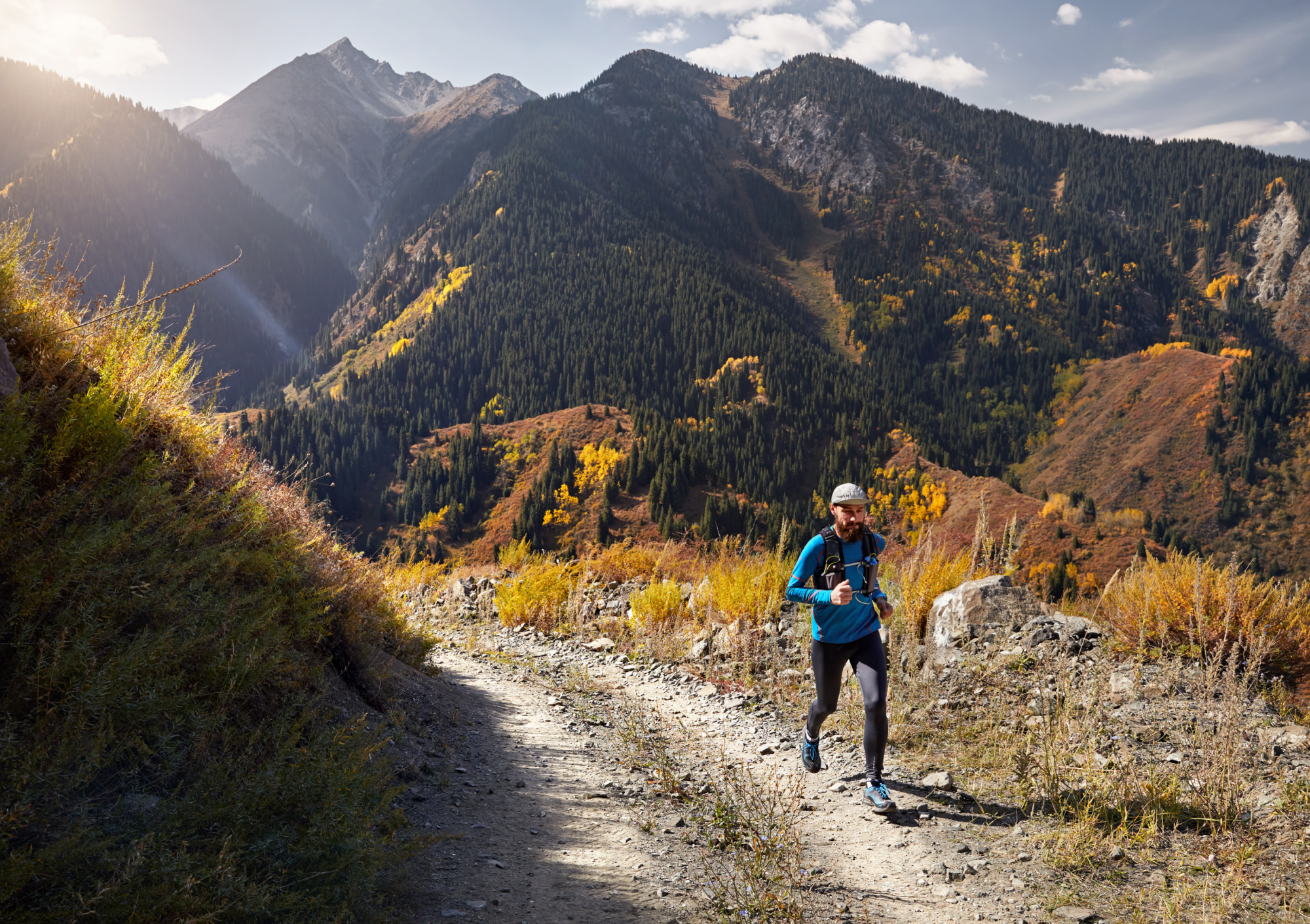
If the trail running bug bit you and you want more of a challenge, there are numerous ways to find it. Books like The Ultimate Trail Running Handbook by Claire Maxted and Born to Run by Christopher McDougall offer stories and insight from experienced trail runners. Consider signing up for a nearby trail race on RunSignUp or the American Trail Running Association. Search on Facebook for local running groups. If you have a specialty running store in your area, odds are they offer classes, group runs, and other resources that can connect you to other trail runners.
It’s also fun to push your distance limits as a trail runner. Worst case scenario, if your legs and lungs run out of steam, your Saturday morning run can turn into a mile jog plus a 4-mile hike—and still be just as scenic and enjoyable.
Trail Running Injury Prevention
Trail running comes with its own slate of injuries. As a result, trail runners are no more or less injury-prone than road runners. A bad step or a fall on the trail can result in a strain, sprain, or a fractured or fully broken bone. Injury prevention starts with preparing your muscles to handle all the work a trail run demands. When muscle fatigue causes bad form, injuries are never far behind.
Cross-Training for Trail Runners
There are a few specific muscle groups that are extra important for trail running, Boughner says.
“It varies based on a person’s injury history, and there’s no one-size-fits-all. But in general, focus on strengthening your quads, calves (specifically your soleus), and glutes. Those are the top three,” she says. “We all need strong hamstrings and we need strong cores, but if you’re just getting started or you have limited time and your injury history aligns with it, those are the muscle groups I’d focus on.”
Exercises like split squats, calf raises, box step-ups, and plyometrics are great. Mix in strength training once or twice a week to maximize the benefit, and try to avoid doing strength training one or two days before a long run, Boughner advises.
Nutrition for Trail Running
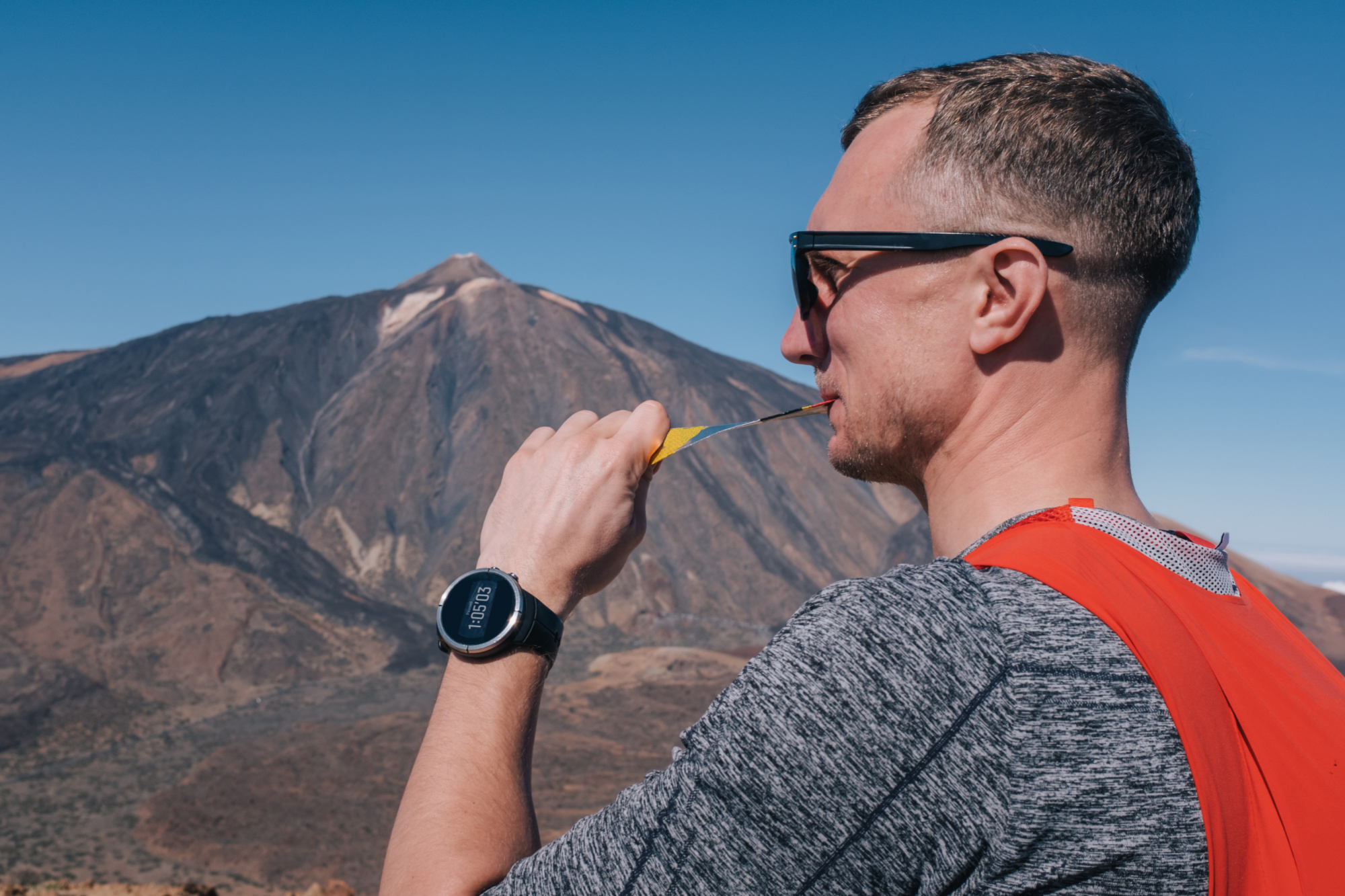
One of the best ways to be a safe trail runner is to take proper care of your body before, during, and after your runs. Muscle cramps, fatigue, and dehydration could lead to big problems depending on how deep in the wilderness you are and how remote the trail network is.
Carb up one to two days prior to your longer runs, Boughner says. This will help ensure you have the energy stores to get from start to finish. Some high-quality, high-carb foods include whole grains like brown rice, quinoa, and oats, as well as fruits, beans, and some vegetables.
When you run, your digestive system is one of the first systems to essentially shut down from lack of blood flow. (That’s why nausea, vomiting, and diarrhea are common maladies for long-distance runners.) To avoid these issues on longer runs, Boughner recommends eating something carb-heavy within the first 20 minutes of the run. That might be an energy bar, some chews, or a gel. Keep eating as the run goes on. By putting food in your digestive system, you can keep your digestive system functioning properly. You also need to consume calories while running to maintain a certain level of performance. The longer your trail run, the more calories you need to eat. This varies for everyone based on their body weight and energy output, but a general rule of thumb is for every 30 minutes of running, you should consume about 100 calories.
Food is a necessary part of post-run recovery too, Boughner says. Eat something that’s high in protein within 15 to 30 minutes of finishing a long run. This might be a protein bar, some nuts and cheese, or a peanut butter sandwich. Then, try to eat a full meal within the hour to replace lost calories and nutrients.
Hydration for Trail Running
Of course, hydration is also critical. For every hour of trail running, you should consume between 24 and 32 ounces of water in order to stay hydrated. However this is a very general rule of thumb. If you expect to sweat a lot on a really hot day, consider adding an electrolyte mix to your water (a good option anytime of year) or increase your water intake. Ideally, that electrolyte mix will have sodium and other important nutrients that replenish everything you’re losing through your sweat. Trail runners prefer to carry water in different ways, so find a system that works for you. That includes hand-held water bottles, hip belts with water bottles, or hydration bladders carried in running vests. There is such a thing as over-hydrating, though, so drink liquids in moderation while runnning.
Trail Safety and Etiquette
Aside from carrying the essentials, being a safe trail runner also involves understanding trail etiquette, communicating with other trail users, and researching where you’re going before showing up. Forrest Boughner, expert trail runner and founder of Alpine Running Guides (and Sara Boughner’s husband) is used to studying trail logistics before taking out guided groups.
“One of the biggest differences between road running and trail running is that you are quickly beyond immediate help if something goes wrong,” Forrest says. “If you break a leg, it could be hours before someone gets to you for help. So understanding where you’re going and what the consequences are is one of the primary parts of being a responsible trail user. Go out and explore, but just know there’s more risk by venturing out on trail.”
Common Trail Etiquette
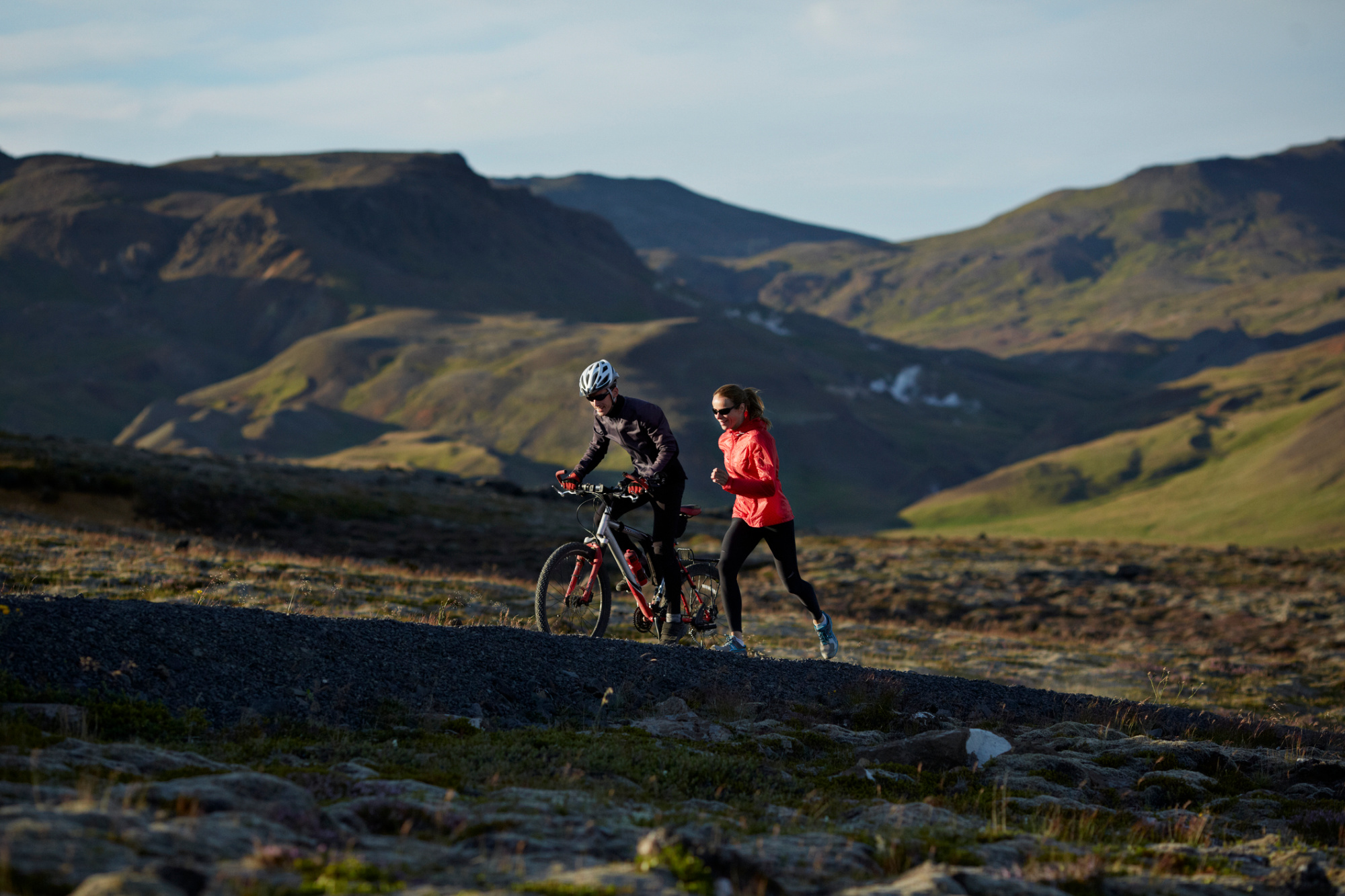
Thanks to the recent explosion in interest in outdoor recreation, odds are you won’t be the only person on the trail. You might see casual walkers, serious hikers, mountain bikers, motorized vehicle users, horseback riders, and other runners. You’ll be moving faster than some of these folks and slower than others.
If you’re overtaking hikers or walkers, alert them to your presence while at least 20 feet behind them is possible. Forrest recommends kicking a few rocks or scuffing your shoe to make some natural noise, then gently announcing, “Coming up behind you!” This is just common courtesy, he says, and it will also ensure you don’t scare them.
According to the USA Cycling, mountain bikers are supposed to yield to pedestrians and alert you if they’re behind you. This is one of many good reasons to not wear in-ear headphones on a trail run. In practice, this doesn’t always happen. Depending on the trail conditions, you might not get much notice before a cyclist zooms past you. The same holds true for motorized vehicle users, like dirt bikers. Another general rule of thumb is that anyone descending a hill should yield to anyone who is climbing that hill.
But how this rule interacts with the rule about cyclists yielding to pedestrians is complicated. One time during a trail race, dirt bikers rode straight up at us while we were on a narrow descent, running us off the trail. Under one rule, they should have yielded. Under the other, we were in the wrong. When in doubt, yield and be polite, and try to avoid confrontation if possible—even if you have to run through a cloud of two-stroke fumes for the next half-mile.
“You always want to be the polite one,” Forrest says. “We’re all just trying to have fun out there. And I feel like there’s an element of karma to it. If I step aside for this mountain biker, or this guy who looks like he’s having a lot of fun running down this climb, then maybe someone will step aside for me.”
Research the Trail
Picture showing up to a trail that descends into a canyon in the middle of a hot day. If you mindlessly chug most of your water on the descent, suddenly you run the risk of heat stroke or dehydration on the massive climb back to your car. If you had planned ahead, you wouldn’t have needed those search-and-rescue volunteers to bail you out.
“Know what the weather conditions are, what the trail type is, whether its really rocky or brushy or shaded versus sunny, and also if there are trail markings, or not,” Forrest says. “Sometimes a trail is completely grown over and yet it still shows up on a map.”
Apps like onX, Trailforks, and Strava are great for researching trail distances and elevation profiles. They all have offline capability, which means they’re absolutely worth the money.
“One of the reasons we love trails is because there’s an element of surprise around every corner, and it’s important to know what your limitations are when it comes to some of those surprises,” Forrest continues. “If you get beyond what you’re capable of handling, then someone else has to come out and risk their safety to get you out of there. Plus it’s way more fun when you’re more prepared.”
The Benefits of Trail Running
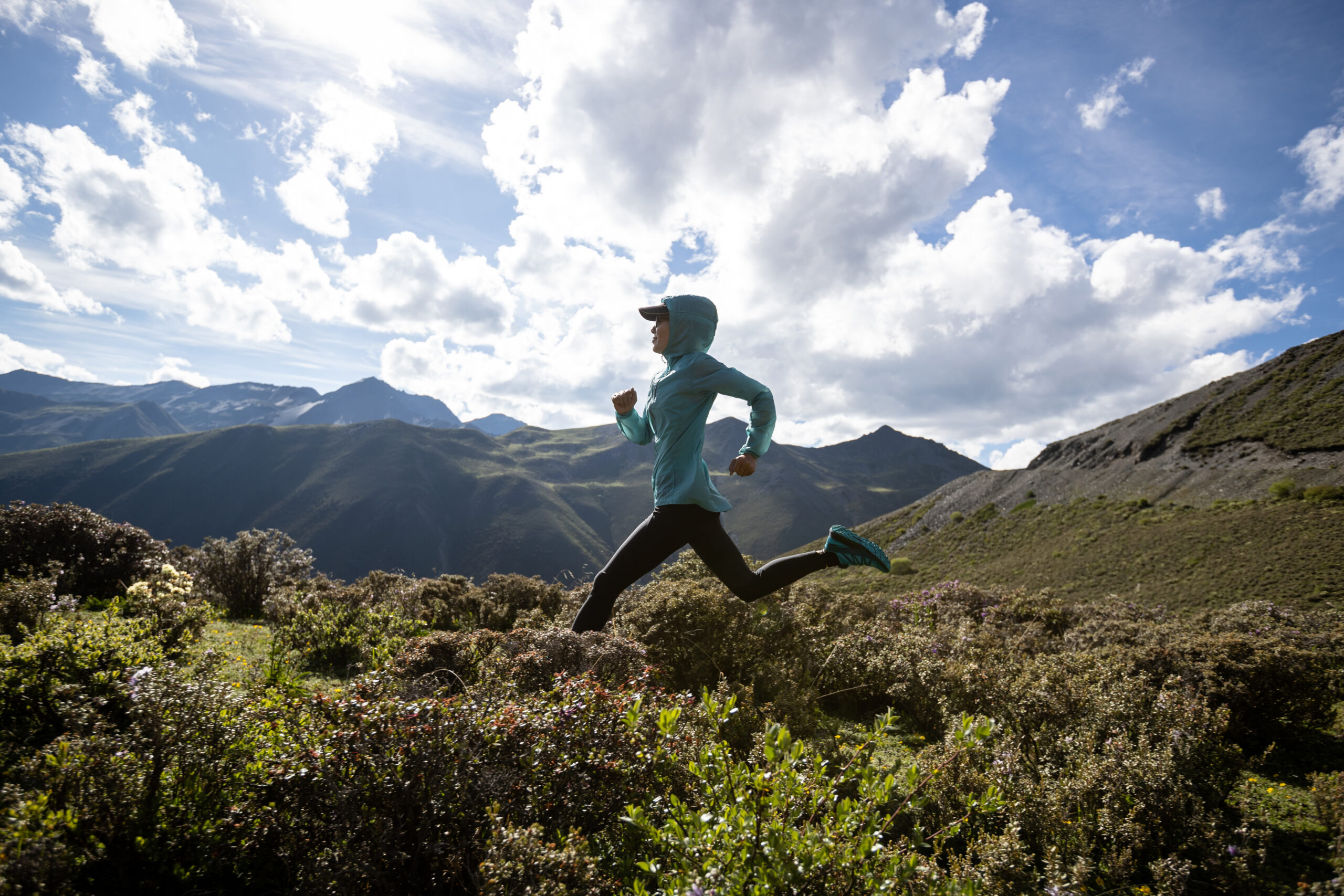
Aside from the runner’s high, the improved cardiovascular health, and the sense of community that all types of running seem to spawn, the benefits of trail running are pretty different from those of running roads. Perhaps the greatest benefit is also the simplest: You’re on a trail rather than a sidewalk. Trail runners don’t have to navigate stoplights, construction, or many other people. They do have to take wildlife, weather, and personal safety a little more seriously. But that sense of self-reliance and preparedness is one of the many things trail runners grow to love. Just like hunting and backpacking, trail running often becomes a game of “how much can I carry and how far can I go?”
It’s also a faster way to get time in the woods than a hike. Outdoor Life gear staff writer and trail runner Laura Lancaster points out this is a huge benefit to parents.
“With a kid, I don’t always have a lot of time to myself to get after it,” she says. “Trail running lets me get deeper into the woods than I can go on just a day hike, and get a serious workout in, all in an hour. That’s a win for me.”
Another benefit of trail running is the strength you develop in the stability muscles in your feet, ankles, legs, and core. These muscles wouldn’t get as much work on a treadmill or a sidewalk. While your odds of tripping and falling go up with trail running, especially on more technical terrain, you actually can prevent some of the traditional running injuries from repetitive, hard-surface strikes. This is thanks to the varied gait on softer terrain characteristic of trail running.
Does Trail Running Make You a Better Hunter?
Any cardiovascular pursuit is going to make you a better hunter. This is true whether you scramble up talus fields to chase goats or you sit in a treestand all morning. Being physically fit will certainly never make you a worse hunter. But it does have more benefits for some types of hunting than others. Mountain hunters, backcountry hunters, and bird hunters especially reap the rewards of a good trail running practice.
“I’ve missed shots on flushing roosters because I got tired when my dog was trailing a bird. And I’ve seen other hunters miss opportunities on big game out West because they couldn’t get where they needed to go in time,” says OL executive editor Natalie Krebs. “The more trail running I do, the more fun I have hunting. It’s free, year-round training for me and my bird dog.”
In short, the benefits of trail running are as follows:
- Time spent outdoors
- Improved cardiovascular fitness
- Stronger stability muscles in your lower body and core
- More exercise in less time than just hiking
- A faster way to reach and see beautiful scenery
- More mentally taxing than road running, forcing you to forget everything else in life and focus for the duration of the run
- Great exercise for hunting dogs
- Speed scouting for hunting spots, camping sites, and more
Trail Running FAQ
Trail-running shoes have deeper treads on the soles that offer more grip on varied terrain. There are also more minimalist options that allow runners to feel the ground beneath them. More experienced trail runners tend to prefer these over heavily cushioned shoes. Road-running shoes have more focus on cushion, response, and stability for long, tedious miles of slapping pavement and cement.
All running can be hard on your knees. But depending on the terrain and footing, trail running is often easier on your knees than road running. Dirt trails and trails with lots of soft pine needles and debris are more forgiving than a cement sidewalk. But if your trails are rocky and involve a lot of steep descents, they could be harder on your knees. If you experience knee pain while running it’s smart to seek out a physical therapist who specializes in work with runners. Knee pain usually comes from a combination of different factors.
Trail running feels like more of a full-body workout than road running. This is because you rely on your core and upper body muscles to stabilize yourself more than you do while running on a road. Arms tend to pump harder and spread out wider for balance. Core muscles work harder to keep you upright on uneven terrain. Legs have to fight harder on inclines and declines, which can be more sudden and intense than the sloping hills of a city street.
Final Thoughts on Trail Running
Getting into trail running is a no-brainer for hunters, hikers, backpackers, and other outdoorsy types. Trail running is the best option whether you want to improve your comfort and confidence in the woods or if you just want to get in better shape. Skip the crowded gym and the busy sidewalk altogether and go raise your heart rate in the woods instead.
“Trail running gives you the confidence to tackle most things in the outdoors,” Forrest says. “The longer you go, you realize if you slow down and keep eating, you can go forever. You discover you can climb hills you couldn’t climb before, or run down switchbacks you’ve never run down before. You get sucked into situations with constant little victories. And yeah, trail running is for everyone.”

